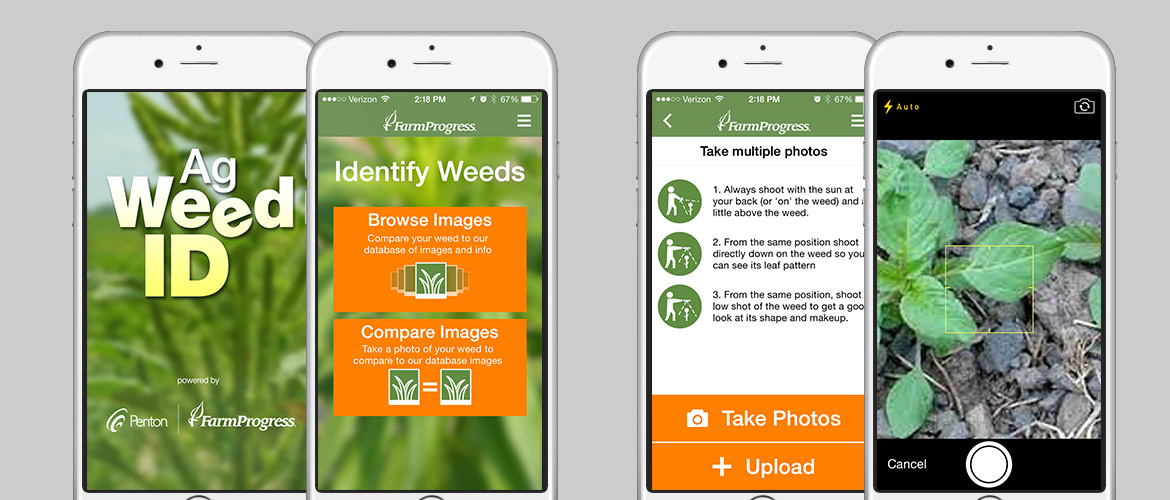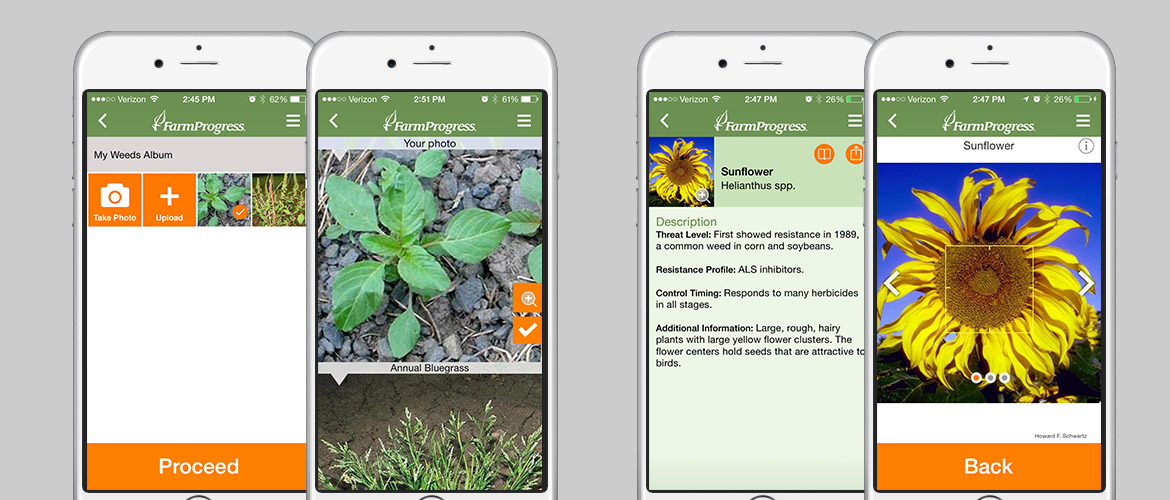Agricultural Weed ID App Design/Development
Campaign Description:
The Challenge:
AG Weed had a robust database that included information and images of many of the most common weeds and wanted to leverage that information to create an in-hand tool to help farmers identify weeds during scouting.
Client Overview:
Penton Publishing, sought to develop a user-friendly mobile application for farmers, aiming to
assist in identifying and managing various weeds impacting agricultural fields. The app aimed to
provide quick and efficient weed identification capabilities, suggest effective eradication
methods, and offer integration for purchasing recommended herbicides.
Project Objective:
The primary goal was to create a comprehensive mobile application, named AG Weed ID, and
was available on both iOS and Android platforms. This application would allow farmers and
agricultural professionals to identify various weed species based on images, geographic
location, and specific crop types. The application needed to offer detailed insights into weed
characteristics, resistance profiles, control methods, and recommended weed killers
compatible with specific crops, thereby assisting farmers in maintaining healthy crops and
optimizing yields.
Client Challenges and Solution Approach:
Farmers were increasingly reliant on mobile devices in their day-to-day farming activities, yet a
simple and accessible weed detection application was not available. The AG Weed app would
require an expansive database with a multitude of information and images cataloging common
weed species. The challenge was to harnes this repository of data and translate it into an
intuitive UI/UX compatible with the mobile technology and camera features found on iOS and
Andriod devices, for on-the-spot identification across mobile and tablet devices. The aim was to
create an application that streamlined the process of identifying weeds, allowing farmers to
efficiently manage and identify potential threats to their crops.
Design and Development Process:
During the design and development process, the focus was on creating a branded frontend
featuring screens that adapt seamlessly to both mobile phones and tablet devices. The goal was
to design an easy-to-navigate and elegant user interface (UI/UX) that offered simplicity and
intuitiveness. The primary aim was to ensure that even farmers with limited technology
expertise could effortlessly identify weed types and access the pesticide treatment solution,
making the entire process quick and user-friendly.
App Features:
Weed Identification: Farmers could either compare weeds instantly or capture photos using the
app's camera integration for later identification.
Categorization:
The application allowed narrowing down weed species by crop, season, and
location.
Comprehensive Information:
Identified weeds were accompanied by detailed resistance
profiles, lifecycle details, and control recommendations.
Sponsor Integration:
The app featured a sponsor integration that enabled users to directly
purchase the most suitable weed killers.
Technology and Execution:
The development process encompassed intricate coding on iOS and Android native platforms.
Digital Instincts employed mobile app development technologies, ensuring seamless
performance and compatibility testing across devices.
Conclusion and Impact:
The AG Weed ID application was a game-changer in the agricultural industry, equipping farmers
with an invaluable tool for identifying and managing weed threats effectively. With its intuitive
features and access to detailed information about weed species and their control mechanisms,
the app empowered farmers to make informed decisions on crop protection. The seamless
integration of herbicide purchasing further simplified the eradication process.
-
Client
Penton Publishing
-
Technology
- Mobile app design and development
- UI/UX design for enhanced user experience
- iOS and Android app development
- Database integration for weed information
- Database integration for weed information
- Integration with herbicide purchasing systems

